

ISSN: 3005-8198 (online) | 3005-818X (print)
Volume 2, Issue 3 (July - September 2024) Pages 1-10
 Research Article
Research Article
1 Civil and Environmental Department, College of Engineering, University of Sharjah, Sharjah, UAE.
2 Civil and Environmental Engineering Department, Fuel and Energy Technology Department, Al-Huda University College, Al Anbar, Iraq.
3 Civil Engineering Department, Faculty of Engineering, Delta Higher Institute for Engineering and Technology, Mansoura, Egypt.
4 Pavement Engineering Laboratory, Research Institute of Sciences and Engineering, University of Sharjah, Sharjah, UAE.
5 Public Works Engineering Department, Faculty of Engineering, Mansoura University, Mansoura, Egypt.
Asphalt pavements are the backbone of the transportation system. In light of the rising costs of energy and materials and the growing emphasis on sustainable infrastructure, there has been a push to enhance the performance of asphalt pavements. One of the primary methods for achieving this goal is the incorporation of warm mix additives into the asphalt binder. This study investigated the impact of Sasobit on the asphalt binder by adding 2% and 4% of Sasobit, by weight, to the asphalt binder. The following tests were conducted: penetration, softening point, rotational viscosity, and high-temperature performance. The results demonstrated that the addition of Sasobit at 2% and 4% concentrations resulted in a 25% and 30% reduction in penetration, respectively, accompanied by a 26% and 71% increase in the asphalt binder’s softening point, as well as a 17°C and 36°C rise in the softening point, respectively. Additionally, the viscosity at 135°C and 165°C and the mix and compaction temperatures decreased by 30% and 25%, respectively. Utilizing the outcomes mentioned above, AASHTOWare simulations were conducted to assess the impact of local climate conditions and gradation. The simulations demonstrated that adding Sasobit resulted in enhanced service life, as evidenced by the International Roughness Index, permanent deformation, and bottom-up fatigue. The simulations and test results collectively indicate that Sasobit’s incorporation could be advantageous for local asphalt pavements. The authors recommend further testing the effect of Sasobit on the performance of asphalt mixes in rutting, fatigue, and moisture damage.
Keywords: Asphalt Binder, Rheology, Sasobit, Physical Properties, AASHTOWare.
The utilization of materials that strengthen asphalt binders, such as polymers, rubber, date seed ash, nanoparticles, and plastics (Alani et al., 2021; Alraini et al., 2022; Helal et al., 2016; Ismail et al., 2022; Sukkari et al., 2022), has become increasingly prevalent in recent years. These materials help to reduce costs, preserve natural resources, and mitigate environmental pollution concerns.
A novel paving technique, warm-mix asphalt (WMA), employs a reduced energy input and is more cost-effective. During the mixing and laying stages, WMA lowers the temperature of the asphalt binder, thereby conferring environmental benefits. These include a reduction in greenhouse gas emissions and a slowing global warming rate (Hainin et al., 2015).
One of the most significant developments in the WMA industry is the introduction of Sasobit, which is regarded as an organic addition (Jones et al., 2010). It is sometimes referred to as Fischer-Tropsch (FT) paraffin wax (Banerjee et al., 2012), and it enhances the flow of asphalt (Wasiuddin et al., 2012). In conjunction with the asphalt binder, Sasobit facilitates the formation of a homogeneous solution that markedly reduces the viscosity of the asphalt binder (Qin et al., 2014). The melting point of Sasobit is approximately 100°C, and at temperatures above 115°C, it is completely soluble in asphalt (Ahmed et al., 2011).
In 2012, Xiao et al. conducted a study investigating the rheological characteristics of non-foaming WMA additives at high-performance temperatures (Xiao et al., 2012). The findings of the tests indicated that the addition of 1.5% Sasobit WMA additive resulted in a slight reduction in the viscosity of the asphalt binder, which in turn led to a reduction in the temperatures required for mixing and compacting the mixtures in comparison to the control binder.
Further research was conducted by Hainin et al. (2012), which studied the impact of warm mix asphalt (WMA) additives on both unaging and the short-term aging of crumb rubber modified (CRM) asphalt binder. The investigation demonstrated that WMA additives may markedly enhance CRM binders’ high-temperature performance grade (PG) and their resistance to rutting. The outcomes demonstrated that the Sasobit-modified asphalt binder exerted the most pronounced influence on the G* of both unaged and RTFO-aged CRM binders (Hainin et al., 2015).
Furthermore, Ghuzlan (2017) examined the impact of Sasobit on the rheology of asphalt binder and the influence of varying Sasobit percentages on performance (Zhao & Guo, 2012). The Superpave test specifications were adhered to for evaluation. The rotational viscosity (RV), dynamic shear rheometer (DSR), and bending beam rheometer (BBR) tests were conducted. The findings indicated that the performance of the asphalt binder is enhanced at high temperatures, while poor impacts are seen at low temperatures. The study found that Sasobit doses of more than 2% should not be recommended. However, D’Angelo (2008) suggests that the additional percentage should range from 0.8% to 3% of the binder’s mass (D’Angelo et al., 2008).
Moreover, Tong et al. (2022) investigated the impact of the Sasobit warm mix on the micro-characteristics of asphalt with varying levels of regeneration. The findings indicated that a 1.5% Sasobit warm mix additive can increase the softening point of asphalt while simultaneously reducing its penetration and ductility. Incorporating Sasobit warm mix agents into asphalt mixtures can facilitate the aging process (Tong et al., 2022).
Wasiuddin (2012) examined the effects of Sasobit at concentrations of 1%, 2%, and 4% on both PG 64-22, an unmodified asphalt binder, and PG 76-22M, a polymer-modified binder. The findings indicated that increased Sasobit content resulted in a heightened PG 64-22 rutting factor. Up to 2% of Sasobit has been observed to improve the rutting factor G*/sinδ for PG 76-22M at 76°C. However, the addition of 4% of Sasobit has been found to result in a decrease in this factor (Wasiuddin et al., 2012).
The incorporation of Sasobit into both unaged and short-term-aged binders has been demonstrated to enhance the rutting parameter (G*/sin δ) following the findings of Jamshidi (2012). The findings indicate that the performance grading of the PG64 binder remains unaltered by adding 1% Sasobit, whereas the incorporation of 4% Sasobit increases the performance grade to PG70. Adding Sasobit to the PG70 binder results in a 2% increase in performance grade, reaching PG73. Further increases of 3% and 4% result in performance grades of PG74 and PG76, respectively. Furthermore, the results indicate that up to 1.6% of Sasobit may be incorporated into PG64 and PG70 binders without compromising fatigue resistance (Jamshidi et al., 2012).
One challenge encountered during the production process was the workability of the asphalt mixture. In particular, for warm-mixed asphalt, since the temperature during mixing and compaction is low, the objective is for warm-mixed asphalt to be as compact and workable as hot-mixed asphalt under low-temperature conditions. Zhao (2012) reports that the study’s findings on the workability of warm mix asphalt containing 2% Sasobit indicate that the workability at 145°C is equivalent to that of hot mixture asphalt at 175°C. This suggests that Sasobit may lower the mixing temperature of the mixture by approximately 30°C. This study aims to investigate the impact of Sasobit addition to the asphalt binder in hot climates (Zhao & Guo, 2012).
The asphalt binder of penetration grade 60/70 was procured from Shell Corporation. The properties of the asphalt binder are presented in Table 1 below.
Table 1. Physical Properties of The Asphalt Binder.
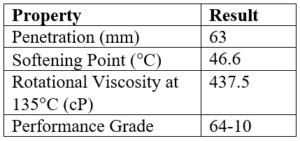
Sasobit is a synthetic hard wax manufactured using the Fischer-Tropsch process. Sasobit is a product of Sasol, a South African company. Table 2 presents the physical properties of Sasobit. The dosages employed in this study were 2% and 4% by weight of asphalt binder. The mixture was prepared using a mechanical mixer at 1000 rpm and 150 °C.
Table 2. Physical Properties of Sasobit.
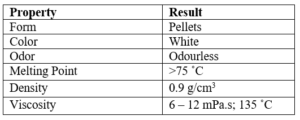
A series of tests were conducted to assess the physical properties of the modified asphalt binder, including penetration, softening point, and rotational viscosity. In accordance with the specifications outlined in ASTM D5 (ASTM D5, 2006), the penetration test is employed to assess the consistency of the asphalt binder. This is achieved by measuring the depth, in millimeters, of the standard needle penetration of the surface of the asphalt binder, with a weight of 100 g, for a period of 5 seconds at a temperature of 25˚C.
Figure 1 depicts the IPC Controls Pivot Automatic Penetrometer utilized for the measurement of penetration.
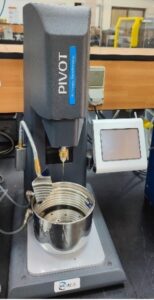
Figure 1. IPC Controls Pivot Automatic Penetrometer.
The softening point temperature was determined via the ring and ball method, in accordance with the ASTM D36 (ASTM D36, 2006). Two standard rings were filled with asphalt and loaded with 3.5g steel balls. The softening point is defined as the temperature at which a steel ball positioned on top of the ring filled with the asphalt binder, initially at a temperature of 4±1°C, reaches the bottom plate after traveling 1 in (25.4 mm). The Anton Paar RKA5, a device used to determine the softening point, is depicted in Figure 2. This apparatus was employed in the present investigation.
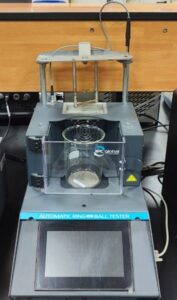
Figure 2. Anton Paar Softening Point Tester.
The rotational viscosity of the asphalt binder was measured at elevated temperatures using a Brooks field rotational viscometer (DV3T), as illustrated in Figure 3. The viscosity of the asphalt binders was tested in accordance with the guidelines set forth in ASTM D4402 (ASTM D4402, 2015) at temperatures of 135°C, 145°C, 155°C, and 165°C. 10g of asphalt binder was poured into a tube. The tube is then placed within an environmental chamber, and a #27 spindle is lowered into the center of the tube containing the specimen. Prior to testing, the specimen is conditioned for a period of 10 minutes at each temperature.
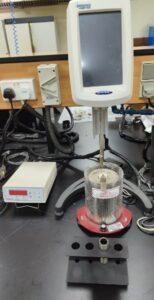
Figure 3. Brookfield DV3T Rotational Viscometer.
A TA Instruments Dynamic Shear Rheometer, as illustrated in Figure 4, was employed to evaluate the modified asphalt binder’s rutting parameter (G*Sin𝛿). A 25-millimeter sample is positioned between two parallel plates at a temperature of 64˚C. The test sample is placed within an environmental chamber and trimmed in accordance with the ASTM [D6373] (ASTM D6373, 2021). Prior to the application of the oscillatory shear load, the samples are conditioned for a period of 10 minutes.
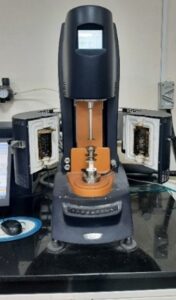
Figure 4. TA Instruments Dynamic Hybrid Rheometer III
AASHTOWare Pavement ME Design is a software program designed to assist pavement engineers in their daily operations. It builds upon the National Cooperative Highway Research Program’s mechanistic and empirical pavement design guide (NCHRP). AASHTOWare Pavement ME Design employs a mechanistic-empirical approach to evaluate the pavement’s responses to stresses, strains, and deflections, thereby anticipating the primary distress and loss over time for pavement. This is achieved through the integration of traffic, climate, and material inputs. AASHTOWare requires the input of real-world climate, traffic, material, and pavement structure information, and employs an input-level system to generate accurate results. In accordance with the Mechanistic-Empirical Pavement Design Guide (MEPDG) and the AASHTOWare ME user manual, there are three distinct levels: Input level 1 is the most precise and high-quality input data, which are directly measured and are site-specific. Level 2 data are either estimated or measured regional values. In accordance with national norms, the lowest input level is Level 3, which serves as the default level utilized in pavement ME.
Two flexible pavement structures were proposed for this study and are presented in Figure 5. A design life of 20 years at a reliability level of 90% was selected as the optimal design criterion. The default software inputs for traffic distribution were maintained. The Sharjah Airport, UAE climate station data were input into the software. For the structural design of the sections, input level 3 was employed, which necessitates laboratory testing of the binder and aggregate gradation. The typical aggregate gradation utilized in the local area was selected, as presented in Table 3. Two scenarios were considered for the asphalt binder inputs. One employed penetration/viscosity inputs, while the other utilized Superpave performance inputs. The effects of rutting, fatigue, and international roughness index (IRI) distress were evaluated for the three asphalt binders under study (control, 2% Sasobit, 4% Sasobit) across the two sections (thin, thick) and two input options (conventional, PG). Further clarification of the study’s testing plan is provided in Figure 6.
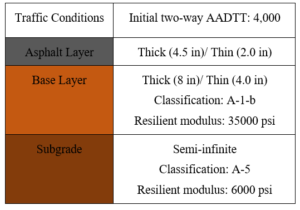
Figure 5. Studied Pavement sections in AASHTOWare
Table 3. AASHTOWare Inputs.
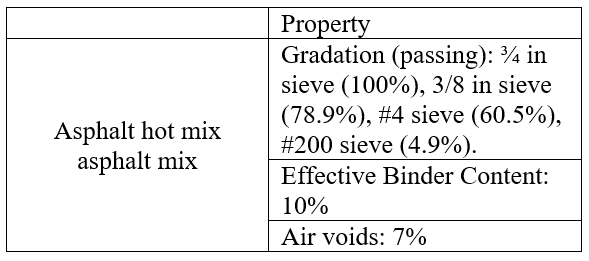

Figure 6. Flowchart for Testing Conducted in The Study.
The impact of Sasobit on the asphalt binder was assessed by carrying out penetration, softening point, and rotational viscosities tests. The results of the penetration test indicated an increase in the stiffness of the asphalt binder. The penetration decreased by 25% and 30%, respectively, when Sasobit 2% and 4% were added. Figure 7 presents the results of the penetration test. The softening point test results demonstrated a notable enhancement. The softening point temperature exhibited a 26% and 71% increase when Sasobit 2% and 4% were added, respectively. Figure 8 depicts the softening point values. The results are consistent with those reported by (Tong et al., 2022). The enhancement in the Sasobit-modified asphalt binders’ penetration and softening point is attributed to the hardening of Sasobit at room temperatures, which results in the formation of crystals within the asphalt binder.

Figure 7. Penetration Test Results.

Figure 8. Softening Point Results.
The rotational viscosity values demonstrated a declining trend as the temperature increased. At 135 ˚C, the viscosity decreased by 6% and 11% for Sasobit 2% and 4%, respectively. At 145 ˚C, a similar decrease was observed for Sasobit 2%, while the addition of Sasobit 4% resulted in a 18% reduction in viscosity. A comparable trend can be observed at 155 ˚C. At 165 ˚C, Sasobit 2% demonstrated no change in viscosity, whereas Sasobit 4% exhibited a 12% reduction. Figure 9 presents the viscosity results obtained by incorporating Sasobit into the asphalt binder. The results, shown in Figure 9, of the rotational viscosity test, as per ASTM D2493 (ASTM D2493, 2016), indicated that both Sasobit 2% and Sasobit 4% reduced the mixing temperature by 1˚C and 4˚C, respectively. The compaction temperature was found to decrease by 1˚C and 3.5˚C for Sasobit 2% and Sasobit 4%, respectively. The viscosity and the impact of Sasobit 2% and 4% on mixing and compaction temperatures corroborate the findings of Xiao et al. (2012) and Zhao (2012) (Xiao et al., 2012; Zhao & Guo, 2012).
Figure 10 illustrates the impact of Sasobit on mixing and compaction temperatures. The reduction in viscosity values can be attributed to the melting of Sasobit within the asphalt binder. Sasobit melts at temperatures above 105°C, whereby the melting of Sasobit softens the asphalt binder at high temperatures, thus reducing the viscosity and improving the workability.

Figure 9. Rotational Viscosity Results.

Figure 10. Sasobit Content with Mixing and Compaction Temperatures.
The high-temperature performance was evaluated using the rutting parameter (G*/sinδ). At 64°C, the G*/sinδ values for Sasobit 2% and Sasobit 4% exhibited an increase of 83% and 186%, respectively, as illustrated in Figure 11. Both Sasobit 2% and Sasobit 4% demonstrated an improvement in performance grade from 64 to 70 degrees Celsius, with G*/sinδ values exceeding 1 kPa in accordance with ASTM D6373 (ASTM D6373, 2021). The G*/sin𝛿 values indicated that Sasobit 4% exhibited superior rutting resistance. Sasobit 4% exhibited a greater potential for rutting resistance, with a 36% difference compared to Sasobit 2%. Notwithstanding the fact that none of the binders attained the requisite performance grade of 76, Sasobit 2% and 4% exhibited a higher value of the G*/sin𝛿 in comparison to the control. The results indicated that Sasobit 2% and Sasobit 4% exhibited 80% and 175% higher values, respectively. The results of the performance grade testing were found to be consistent with those of Ghuzlan (2017) and Wasiuddin (2012). The findings of previous studies indicated an improvement in high-temperature performance, particularly an increase in G*/sin𝛿 (Ghuzlan & Al Assi, 2017; Wasiuddin et al., 2012). The findings of Jamshidi (2012) indicated that the performance grade temperature increased to 70˚C when Sasobit 4% was utilized (Jamshidi et al., 2012), which is consistent with the results of this study. As previously stated, the efficacy of Sasobit is contingent upon its melting point. At room temperature, Sasobit undergoes a solidification process within the asphalt binder, forming crystals that enhance the stiffness of the material. This is corroborated by the results of the physical tests as well as the rutting performance, which is contingent upon temperature and loading.

Figure 11. Performance -grade Temperature Results.
The AASHTOWare simulations were conducted using physical and rheological results. Consequently, the thick viscosity-penetration (VIS-PEN) was selected for comparison of performance (Figure 12). Nevertheless, the comparative analysis will be conducted on the basis of all scenarios. The thick section VIS-PEN scenario simulations demonstrated disparate behavior for the IRI and bottom-up fatigue cracking mixes. The Sasobit 4% mixture exhibited the lowest IRI index, permanent deformation, and bottom-up fatigue cracking. However, all mixtures demonstrated a lack of resistance to deformation. With regard to the phenomenon of permanent deformation, both Sasobit 2% and Sasobit 4% exhibited superior performance, with a pavement life of 11.58 and 13.75 years, respectively, as determined by the VIS-PEN criteria. In comparison, the service lives of Sasobit 2% and the control asphalt binder were found to be similar, with a service life of 11.75 years. However, Sasobit 4% was found to significantly increase the service life, reaching 13.21 years. In both criteria, Sasobit 4% demonstrated a significantly enhanced service life compared to the control asphalt binder. This can be attributed to the enhanced penetration and G*/Sinδ values observed in Sasobit 4%, which indicate an augmented stiffness.
The thin section PG and thin section VIS-PEN scenarios demonstrated a notable enhancement of approximately three years in pavement life based on permanent deformation in comparison to the thick section PG and VIS-PEN scenarios, as illustrated in Table 4. The Sasobit 4% formulation exhibited superior resistance to permanent deformation in comparison to the Sasobit 2% and the control asphalt binder. This improvement in permanent deformation can be attributed to an increase in stiffness, as evidenced by the results of penetration, softening point, and rheological testing. Furthermore, the simulations demonstrated that the pavement life varies based on the assessment criteria. Penetration and viscosity are employed to assess the physical properties of the asphalt binder, whereas the PG test subjects the asphalt to conditions that are analogous to those encountered in actual field conditions. Nevertheless, the use of Sasobit to enhance the performance of highways in the UAE is a viable option, as the results demonstrate improved performance.

Figure 12. Thick Section Vis-Pen Scenario Distress. (a) IRI, (b) Permanent Deformation, (c) Bottom-Up Fatigue Cracking.
Table 4. Pavement Service Life Based on AASHTOWare Simulations.
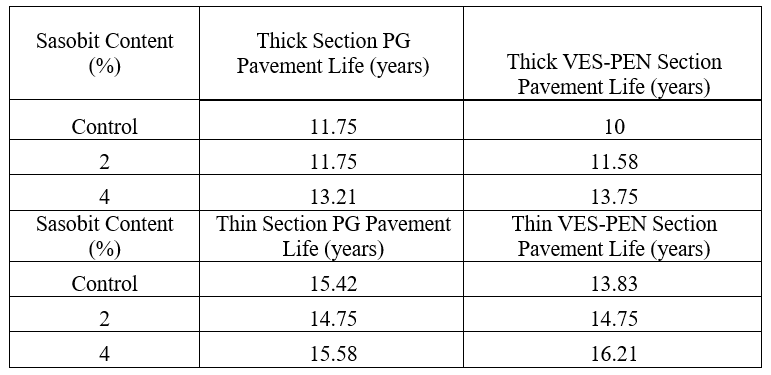
The objective of this study was to examine the impact of incorporating Sasobit into the local asphalt binder on its workability and performance in the context of the UAE. The results of this study permit the following conclusions to be drawn:
A.S: Methodology, Validation, Formal analysis, Investigation, Writing of the original draft.
G.AK: Conceptualization, Investigation, Writing – review & editing.
M.W: Formal analysis, Writing of the original draft, Visualization.
H.E: Validation, Writing – review & editing.
W.Z: Conceptualization, Methodology, Supervision.
The authors declare that they have no known competing financial interests or personal relationships that could have appeared to influence the work reported in this paper.
This research did not receive any specific grant from funding agencies in the public, commercial, or not-for-profit sectors.
No generative AI or AI-assisted technologies were used in the preparation of this manuscript.
The data that support the findings of this study are available from the corresponding author upon reasonable request.
The authors would like to acknowledge the help Karam Alarab and his team provided in preparing some of the testing samples.
This study did not involve human participants or animals; hence, no ethical approval was required.
Cite: Sukkari, A., Al-Khateeb, G., Wajeeh, M., Ezzat, H., & Zeiada, W. (2024). Impact of Sasobit on Asphalt Binder’s Performance under UAE Local Conditions. Steps For Civil, Constructions and Environmental Engineering, 2(3), 1–10. https://doi.org/10.61706/sccee1201120
![]() Copyright: © 2024 by the authors. Licensee Scientific Steps International Publishing Services, Dubai, UAE.
Copyright: © 2024 by the authors. Licensee Scientific Steps International Publishing Services, Dubai, UAE.
This article is an open access article distributed under the terms and conditions of the Creative Commons Attribution (CC BY) license (https://creativecommons.org/licenses/by/4.0/).






An independent academic publisher with an editorial team including many of the top researchers in the world. SSG publishes research, review, and case report articles in double-blind, peer-reviewed, open access scientific and academic journals.
Copyright © 2025 Scientific Steps International Publishing Services LLC (Dubai – United Arab Emirates)